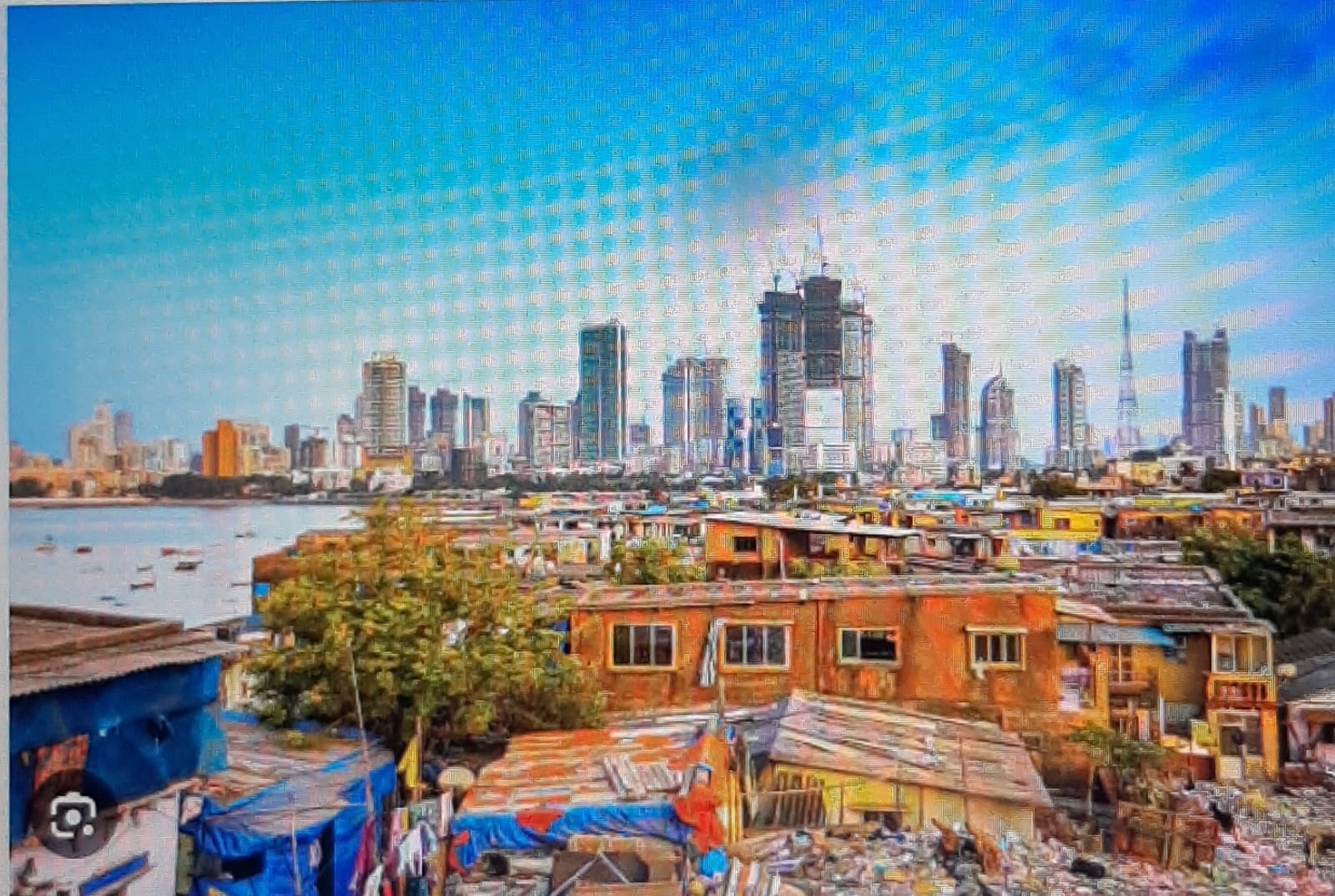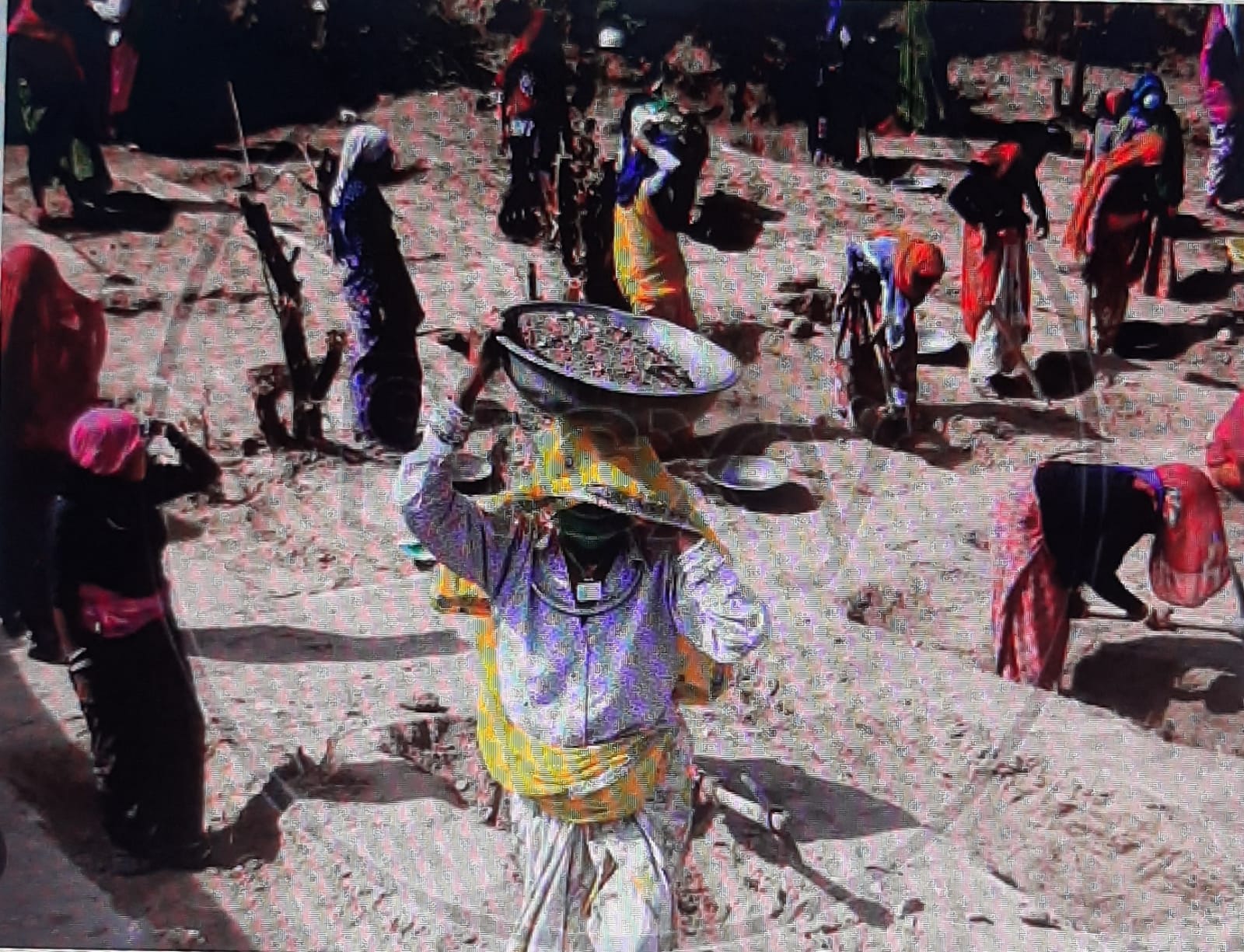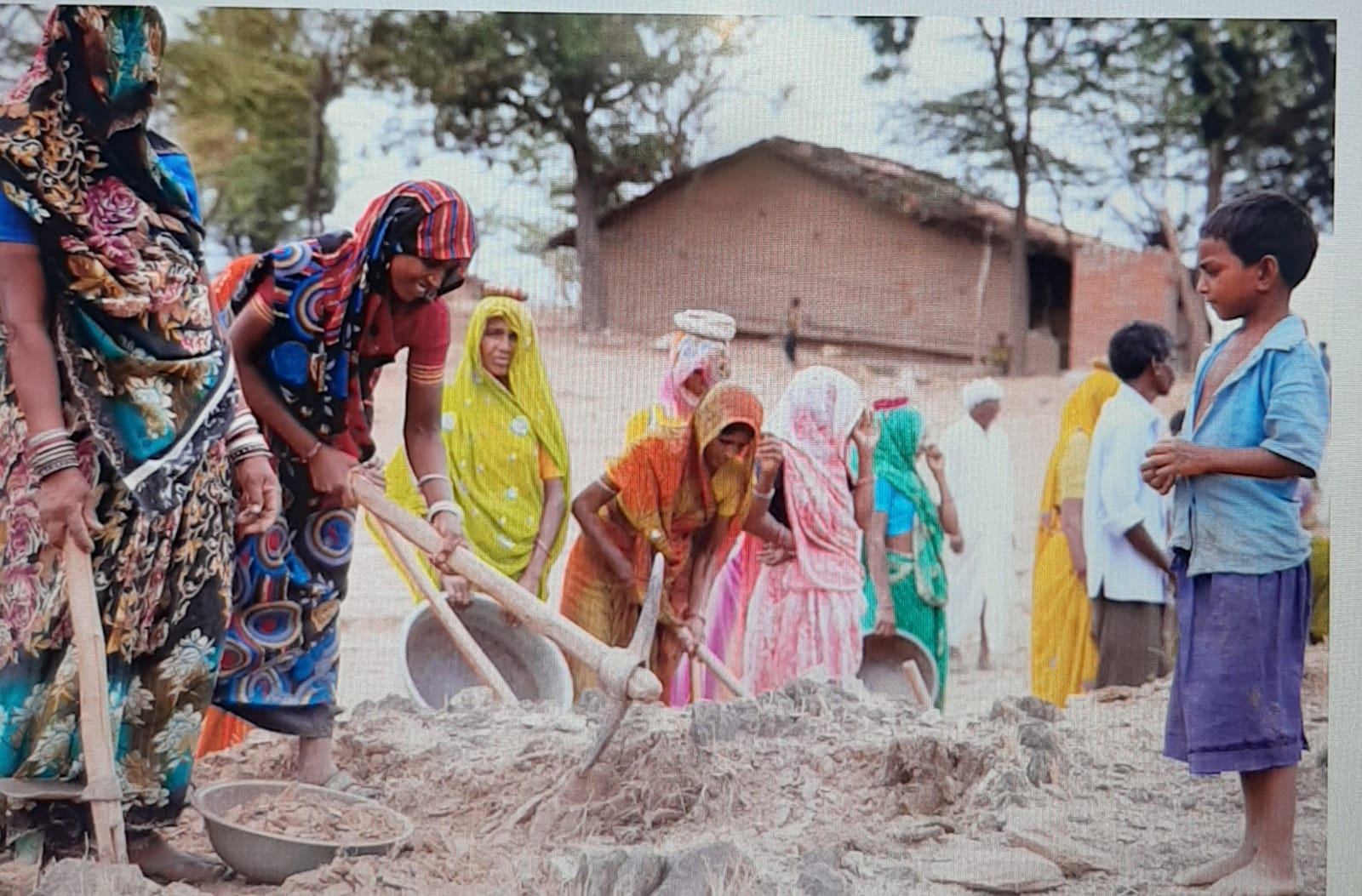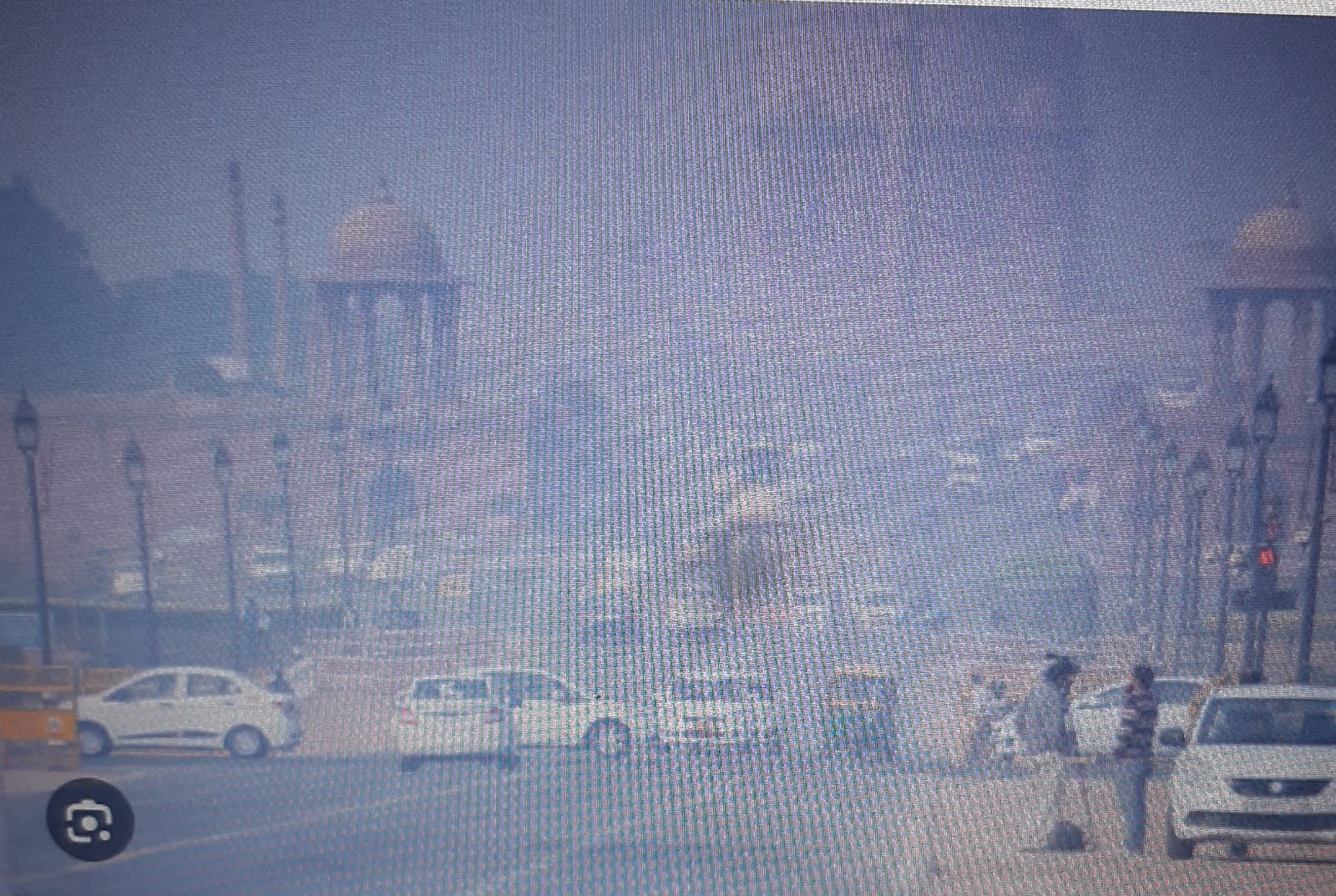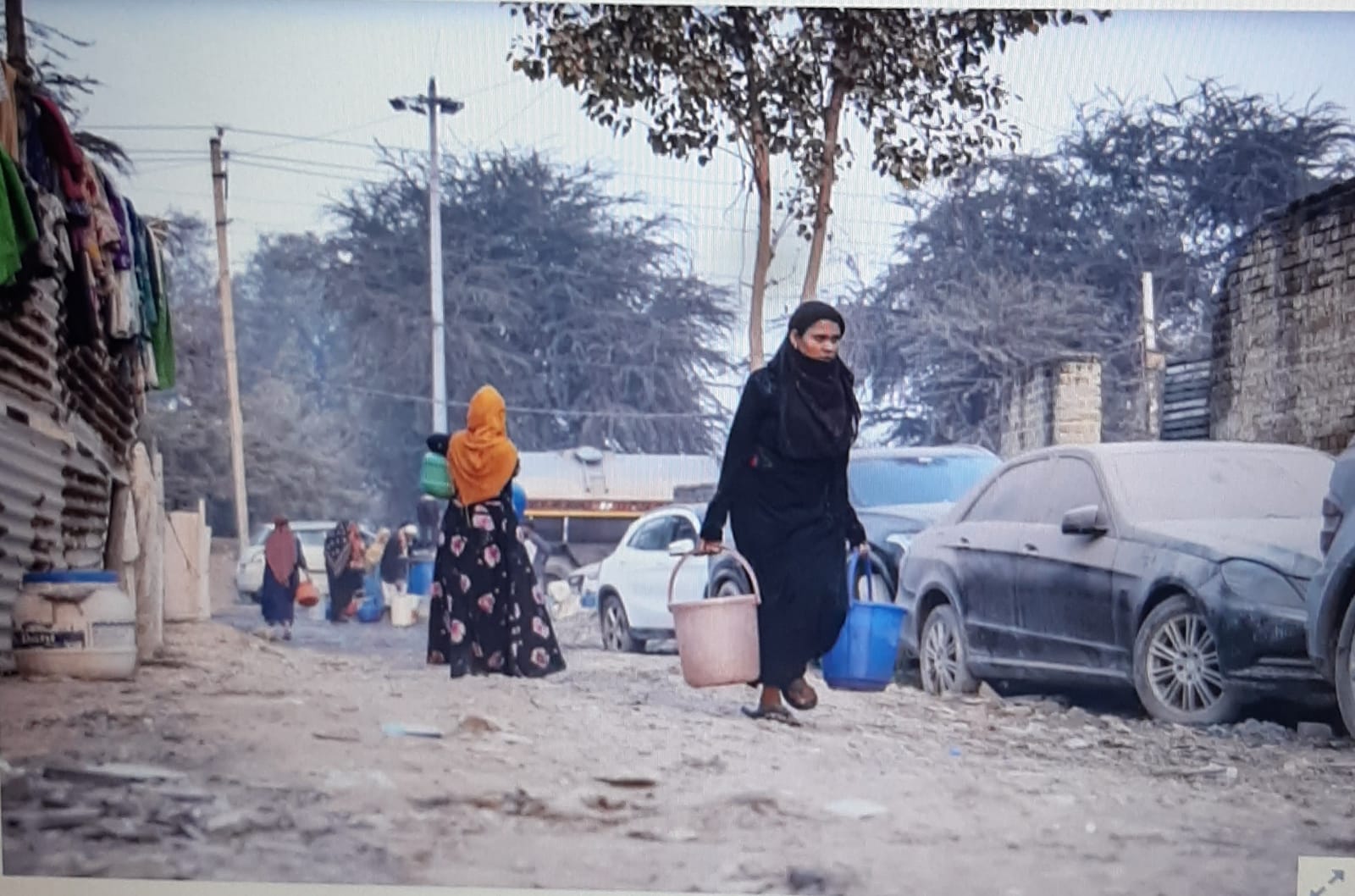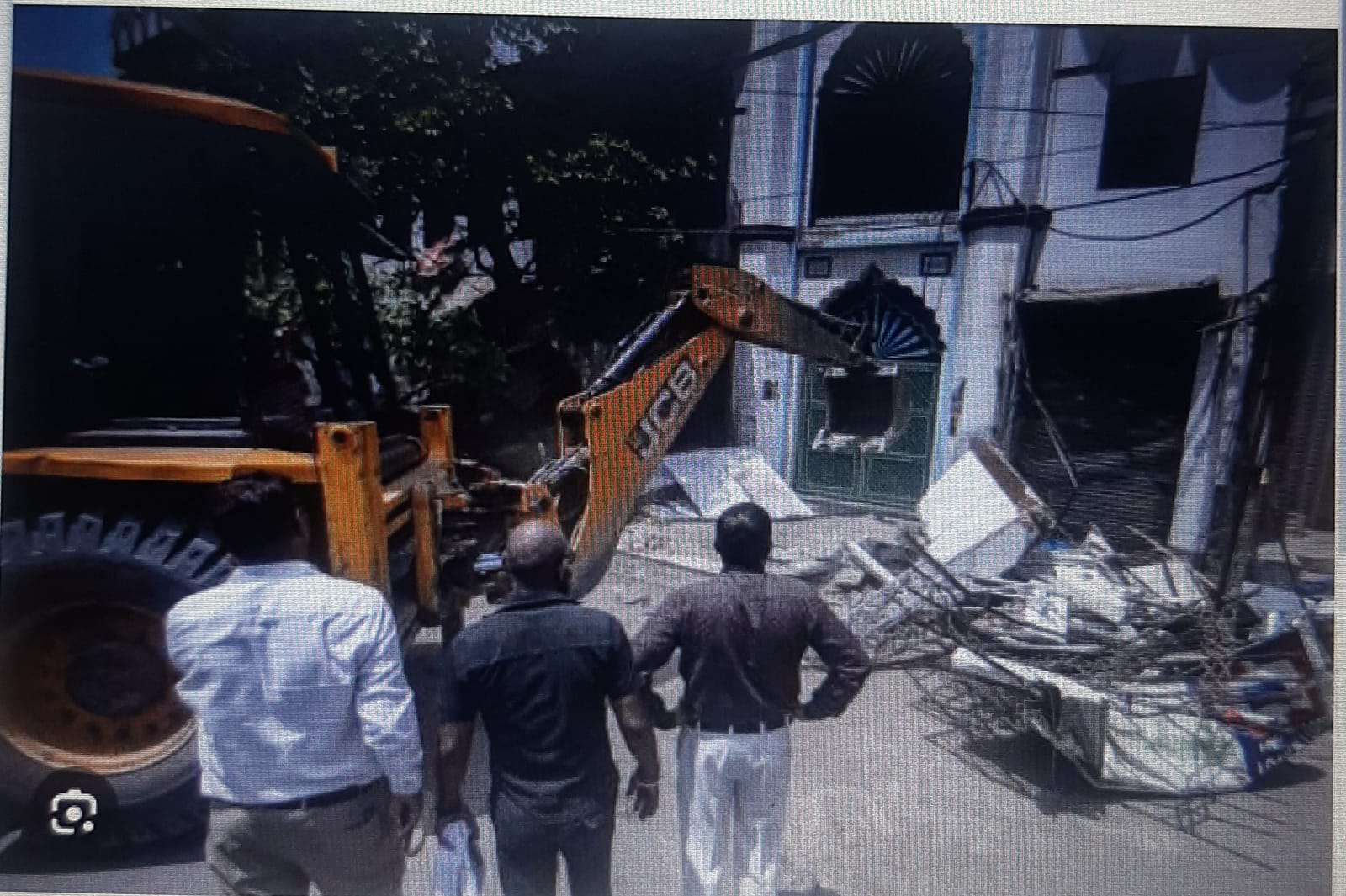
Of late there is increasing use of bulldozers in States by the authorities to raze the residential and business premises of the ‘accused’ who are yet to be proclaimed guilty by a competent court of law. The bulldozer has become a symbol of the popular notion of majoritarian justice in some quarters. It is often seen by others to be intentionally misdirected, prompted by motives other than the ostensible pretext of maintaining law and order and of punishing the disruptive elements in society, writes former IAS officer Sunil Kumar
We live in troubled times. This perhaps is the most charitable view that can be taken to describe what is happening around us, whether in Manipur, Uttar Pradesh, West Bengal, Madhya Pradesh, Rajasthan, Maharashtra or, in fact, any other State in India. Gruesome killings, lynching, horrendous incidents of rape and atrocities against women continue unabated despite prescription of severe punishments, including capital punishment, in statutes passed by the Parliament and State Legislatures. Demand for quick justice grows and, in the digital age and age of social media, it spreads like wildfire, in the process giving rise to fraught situations of law and order.
It is in times like these that the state authorities – police, civil administration, political leaders – find themselves cornered. And a quickfire solution that they can think of to assuage public outrage is to come up with actions which border on giving a decent burial to ‘rule of law’ and to modern theories of justice built on pillars such as individual responsibility of crimes committed; presumption of innocence of accused till proven guilty in court of law; and adherence to principles of natural justice.

One such action is the increasing use of bulldozers in States by the authorities to raze the residential and business premises of the ‘accused’ who are yet to be proclaimed guilty by a competent court of law. The bulldozer has become a symbol of the popular notion of majoritarian justice in some quarters. It is often seen by others to be intentionally misdirected, prompted by motives other than the ostensible pretext of maintaining law and order and of punishing the disruptive elements in society.
However, it is time to ponder seriously on the implications of such knee-jerk reactions of State authorities, where invariably, the police, civil administration and urban local government functionaries work overtime to produce instances of ‘violations’ of law by the ‘accused’ (as well as his/her family and close associates). Such violations primarily include constructing buildings in violation of building by-laws and encroachment on public land. Then the bulldozer is used to raze those structures to the ground even before investigation has been completed and chargesheet filed in the criminal case figuring the ‘accused’. These actions supposedly have ‘public’ approval and this suffices for these Authorities. If you look at it from the police point of view, it helps in defusing a potentially ugly situation wherein the police would have been in the dock and asked to answer uncomfortable questions regarding their functioning. The District Administration heaves a sigh of relief as media attention cools down and the case becomes one of the lakhs of cases pending in session courts where the wheels of criminal justice move all too slowly and the ‘victim’ and the ‘accused’ are left to fend for themselves. Political leadership basks in the glory of ‘quick, drastic action’ against the culprits as the shine has been taken out of assurances like ‘culprits will not be spared and strictest possible action would be taken against them’, which seemed to work so effectively earlier despite being repeated ad nauseum! The bulldozer has emerged as the saviour for administrators of all hues across geographies in India. No matter if it ends up bulldozing justice! And the icing on the cake, so to say, is if the accused happens to belong to a minority community or a non-dominant caste as then the action assumes tones of ‘majoritarian justice’ where upstarts have been shown their place. In the odd case where the accused belongs to the majority community or is close to the ruling party and bulldozer is used (as happened in the UP town of Bareilley recently), the affected party is quick to vow reprisal and publicly announce their intention to never again ‘vote’ for the ruling party. It must be remembered that the state, instead of addressing the issue of rising criminality and bestiality in society, chooses to target select communities, select opponents and dissenters of the establishment by using bulldozers to stamp out, as it were, the very existence of such non-conformists. And it does this in the guise of maintaining public order through punishment and deterrence. It is this deliberate targeting of marginalised communities by the State authorities which renders the act completely violative not only of the process of justice but of the Constitution of India as well. While in some case bulldozer helps the administration to assuage inflamed public anger, in all cases it undeniably ends up bulldozing justice itself!
How is the bulldozer bulldozing justice? If we look at the emergence of the modern state, there are a few common themes underpinning it. First, the state has monopoly over violence. Only the state is authorised to use force to safeguard its territorial integrity against foreign aggressors. Further, the state is permitted by law to use ‘adequate’ force to maintain law and order, safeguard public peace and ensure security of its citizens. Second, the state is duty-bound to uphold ‘rule of law’ wherein use of violence/force even by the state has to be according to the procedure established by law. Third, there ought to be ‘separation of powers’ between the executive, legislative and judicial functions of the state with each acting as a check on the unbridled powers of any one wing. This system of checks and balances is a key pillar of the modern State. Above all, the state has to ensure and safeguard the right to life, and equality before law, of all citizens.
Now let’s look at the pillars of justice which are enshrined in the Constitution and all the laws framed thereunder. First, all are equal before law. Equality before law is a basic premise. Second, if a crime is committed by an individual, he or she alone is responsible for the said crime and not his family, acquaintances or the community. Third, all individuals are presumed ‘innocent’ unless proven guilty by a court of law following due process of law. Fourth, every individual (including the accused) has a right to defend himself/herself. Fifth, the penalty for an offence should be as prescribed by law. A difference has been made between criminal and civil offences.
In the light of the above, let us see how increasing use of bulldozers to raze to the ground, the property of the ‘accused’ is actually bulldozing justice. First, there is no Central and/or State law which authorizes State agencies the use of bulldozer to raze the property of any accused at any stage between commitment of crime to trial and subsequent conviction. Penalty involves imprisonment, rigorous or simple, for varying periods, including life imprisonment and/or imposition of monetary penalty and in exceptional cases, capital punishment.
Thus, use of bulldozers by State authorities at the time of investigation does not enjoy the sanction of law. It is prima facie an ‘unlawful’ act. Second, look at the violations of law which are being routinely cited by authorities to justify the use of bulldozer. In almost all cases the violations or infringements of law cited are the issues of unauthorised construction or encroachment on public land. In almost all cases the violations or infringements of law cited are unauthorised construction or encroachment on public land which are civil offence and not criminal offence.
And what pray, are the associated ‘crimes’ against which bulldozers are used? Based on information available in public domain, these ‘crimes’ range from discovery of ‘bovine meat’ in vehicles or houses; rape and murder, incitement to violence and destruction of public property during public protest. And it so happens that the residential or commercial properties of the ‘accused’ in these ‘crimes’ are also conveniently found to be ‘unlawful’ – built on encroached land, or without sanction of building plan or in violation of sanctioned building plans. It does not matter if the said buildings had existed for decades or were even sanctioned, approved and built with Government subsidy!
Urban civic authorities are becoming ‘party’ to such unlawful acts knowing fully well that the action would not stand judicial scrutiny on the following grounds: firstly, the Building bye-laws provide for ‘compounding’ of the infringement. In case orders of demolition are passed by the competent authority after adhering to due process of law where the accused is granted an opportunity to justify his/her stand, demolition is to be carried out in a manner wherein sufficient time and opportunity is granted to the accused to retrieve their belongings. Secondly, the question arises as to whether the civic authorities can testify that no other such cases of violation of building bye-laws exist, to which the answer would be an emphatic ‘no’. This is evident because no civic authority in any State has the wherewithal, both in terms of competence and resources, to ensure that there is full compliance with rules by all residents in the city. They are also not equipped to ensure that no such buildings get constructed in the first place without obtaining all requisite approvals. For instance, there are just eight employees per thousand population in the Brihan Mumbai Municipal Corporation and this number is just one per thousand in the Patna and Gurgaon Municipal Corporations. The situation will be no different or may even be worse in case of smaller Municpalities and Town Areas who are resource-starved. Even the Development Authorities are unable to check this malaise in their areas. They are also in no position to check encroachment on public lands given the state of land maps in urban areas. And, more often than not, the officials and staff of civic and state bodies turn a blind eye to such infringements either on account of ‘consideration’ received and/or pressure borne upon them by elected representatives. These could range from the local Corporator to the MLA and MP!
Consequently, what is happening in virtually all instances where bulldozers are being used to raze buildings to ground is that civic authorities are directed to ‘produce’ such reports by the police and District administration which could then be used to carry out the demolitions. Further, these demolitions are carried out ostensibly by the civic authorities with support provided by the police and district administration. Thus, if at any time a question around the legality of demolitions comes up before any court of law, the onus would fall squarely on the civic authorities and the police and district administration would wash their hands of the matter by claiming that they were only providing ‘support’ to civic authorities in carrying out the operations. This is clearly the shifting of onus of responsibility in a situation which arose out of the acts of omission and commission of the police and where the police should have been answerable. This is all the more glaring as one would be hard put to cite even one instance where demolition using bulldozers has been carried out when there has been no accompanying heinous crime by the ‘accused’! In other words, if there might be instances of alleged violation of civic construction laws, unaccompanied by any other criminal accusation, in nearly all such cases, house-owners manage to get ‘stay orders’ from competent courts in the nick of time. Here there is no deployment of the bulldozer, showing again that ‘bulldozer action’ is reserved for select cases alone.
The situation is aggravated when it emerges that the owners whose properties have been demolished using bulldozers overwhelmingly belong to one community. ‘Bulldozer justice’ in the last few years seems to be aimed at targeting a particular community and polarizing society along communitarian lines. It makes a mockery of equality before law, rule of law and due process of law. It is indeed a sad state of affairs that the judiciary has been, by and large, a silent spectator to this unfolding scenario in different parts of the country. This practice is as abhorrent as ‘encounter killings’ resorted to by the police. After over hundreds of such so called ‘encounter killings’ by the police in some States, when the judiciary questioned this practice, suddenly all police bullets have begun to hit criminals below their knees during the course of police encounters!
From the above, it is evident that the biggest casualty of this ‘bulldozer justice’ is the judicial system and justice itself. The irony is that the perpetrators – the police, the civil administration and the political masters bask in the virtue of quick action and response to crimes. Bulldozers found pride of place and were displayed in public rallies of some leaders during the recent national elections. No questions are being asked of those who are responsible for running the system in the first place and society is being divided and its moral fabric torn to shreds in the process.
It must be realized that there are no ‘quick-fix’ solutions to these intricate problems. Those responsible for running the administration – the executive – must be held to task and asked searing questions. Why is crime investigation so shoddy and incompetent in the first place? Why are chargesheets so shoddy and contradictory from one page to another of those thousands of pages which they unerringly seem to run into that they invariably provide an escape route to the perpetrators of crime rather than ensuring swift and competent completion of trials? Why should there be hundreds of witnesses who end up contradicting each other or turn hostile or never turn up and thereby contribute to delay in completion of trials when even one testimony of a reliable witness ought to be sufficient to convict a criminal? These questions are neither asked nor answered by anyone.
To top it all, is the issue of corruption in public services. Everything can be ‘purchased’ if one has the wherewithal and temperament to pay. We have seen in the recent past how evidence has not only been t a m p e r e d w i t h a n d c r i m e s c e n e s destroyed ,but even forensic and medical reports fabricated! If one is poor, if one belongs to the weaker sections of society then it appears justice is not for us. Use of bulldozers to demolish property of accused cannot guarantee their eventual conviction in a court of law. At best, it is like an ’ item song’ in a movie which may elicit whistles in the cinema halls but does not contribute to an overall engaging movie experience for viewers. It may provide momentary political dividends to some but at great cost to society and certainly by further weakening an already emaciated administrative and criminal justice system. It is time we as citizens begin to ask searching questions of those whom we have elected to run the system as per Constitutional provisions and stop this practice where justice itself is getting bulldozed.
The arbitrary and intentional overturning of rule of law or justice by the state creates near-anarchic conditions which are much more conducive to unbridled brutality on an increasing scale in non-state crimes against ordinary citizens, in particular, against women, suppressed castes, minorities and persons vulnerable owing to poverty, lack of social standing or just being peripheral in society. Threat to public order would not diminish if a feeling of alienation takes deep root among sections of the population. Efforts to brand any community or caste as ‘criminal’ is akin to the immoral practice of branding certain tribes as ‘criminal tribes’ by the colonial masters in 19th century. We must remember that bulldozer cannot become a symbol of justice in any civilized country and society.
(Sunil Kumar is former Secretary Government of India)


